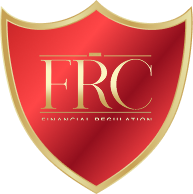Wealth management involves the art and science of managing client portfolios to meet long-term financial goals while addressing risk. At the heart of effective wealth management lies the concept of risk-adjusted returns, a measure that evaluates the return of an investment relative to the risk it carries. For investment advisors, managing risk is as important as achieving returns. By balancing both aspects, they can ensure their clients’ portfolios remain resilient, even during periods of market volatility.
Risk-adjusted wealth management seeks to maximise client outcomes by optimising returns while managing and mitigating risks. Whether working with high-net-worth individuals, families, or institutions, understanding how to assess and apply risk in portfolio construction is a crucial skill for wealth managers.
This article provides an in-depth exploration of risk-adjusted wealth management, examining key strategies, tools, and techniques that investment advisors can use to build diversified portfolios. We will explore various methods for assessing and managing risk, including tools like the Sharpe ratio and other performance metrics, and offer insights into how to implement these strategies in everyday advisory practice.
By the end of this article, you will have a deep understanding of how to apply risk-adjusted wealth management principles to your client portfolios, ensuring long-term growth and minimised downside risk.
Before diving into specific strategies, it's important to understand what risk-adjusted returns actually are. In investment terminology, risk-adjusted return is a measure used to compare the performance of an investment (or portfolio) relative to its risk. The primary goal is to assess whether the returns generated by an investment are worth the level of risk taken on to achieve them.
In other words, risk-adjusted return considers the trade-off between risk and reward. It helps investors, and by extension, investment advisors, determine if a portfolio's returns are consistent with its risk profile or if it is taking on more risk than necessary to achieve those returns.
One of the most widely used metrics for calculating risk-adjusted returns is the Sharpe ratio, which measures the excess return per unit of risk (standard deviation). The formula for the Sharpe ratio is:
Sharpe Ratio=Rp−Rfσp\text{Sharpe Ratio} = \frac{R_p - R_f}{\sigma_p}
Where:
RpR_p is the expected portfolio return,
RfR_f is the risk-free rate,
σp\sigma_p is the standard deviation of the portfolio’s return.
A higher Sharpe ratio indicates a better risk-adjusted return, meaning the investment is delivering higher returns for a given level of risk. Conversely, a lower Sharpe ratio suggests the investment may not be generating enough return to justify its risk.
Other metrics for assessing risk-adjusted performance include the Sortino ratio, Treynor ratio, and Jensen's alpha, each of which has its own strengths and nuances in specific types of analysis.
In the context of wealth management, these metrics are useful tools that investment advisors can use to assess how well a portfolio is performing and whether it’s aligning with the client’s risk tolerance and financial goals.
The core challenge of wealth management is determining how to structure a portfolio that balances risk and reward in a way that aligns with a client’s financial objectives. Portfolio construction involves deciding how to allocate capital across various asset classes, such as equities, bonds, real estate, commodities, and alternative investments, each of which comes with different levels of risk and potential return.
The general principle of diversification helps mitigate risks by spreading investments across multiple asset classes and sectors, reducing the impact of any single asset's poor performance on the overall portfolio. However, diversification alone is not enough to ensure a risk-adjusted return. Advisors must actively manage and evaluate the risk associated with the portfolio as a whole, continually adjusting the mix of assets in response to market conditions, client goals, and changes in risk tolerance.
Risk tolerance is the cornerstone of building a risk-adjusted portfolio. It refers to the amount of risk a client is willing and able to accept in their investment strategy. Risk tolerance varies widely from one individual to another and is influenced by factors such as:
Time Horizon: Clients with a longer investment horizon can afford to take on more risk, as they have more time to recover from market downturns. Conversely, clients nearing retirement may prefer a more conservative strategy that protects capital.
Financial Goals: Different objectives, such as saving for a child’s education or building wealth for retirement, may require different levels of risk. A client aiming for significant capital growth may be more willing to take on higher risk than one focused on preserving capital.
Emotional Comfort: Some clients may have a higher tolerance for volatility and market fluctuations, while others may be more risk-averse and prefer a more stable investment approach.
By using a combination of quantitative tools (such as questionnaires and surveys) and qualitative assessments (such as client discussions about their comfort with risk), advisors can gain a clear understanding of their clients' risk profiles.
One of the most important decisions an advisor makes when managing a portfolio is the asset allocation. The goal of asset allocation is to achieve a diversified mix of investments that balances risk with potential return. By strategically allocating assets to different categories (equities, bonds, cash, alternatives, etc.), an advisor can reduce the impact of market volatility on the overall portfolio.
Diversification within each asset class is also critical. For example, an advisor may invest in a variety of equity sectors (such as technology, healthcare, and financials), as well as bonds with different maturities and credit ratings. Adding alternative investments, such as real estate or commodities, can further enhance diversification and reduce overall portfolio risk.
To achieve risk-adjusted wealth management, advisors need to monitor the correlation between assets. Investments with low or negative correlation—meaning they do not move in tandem with each other—are key to reducing portfolio risk. For instance, while equities may be volatile during market downturns, bonds or commodities may perform better during these periods, helping offset the negative impact.
Effective risk management is vital for building a risk-adjusted portfolio. By proactively managing risk, investment advisors can help ensure that clients do not take on more risk than necessary to achieve their financial goals.
Regular portfolio rebalancing is essential to ensure that the portfolio remains aligned with the client’s risk tolerance and investment objectives. Over time, certain assets may outperform others, causing the portfolio to become overweight in certain sectors or asset classes. This can lead to higher levels of risk than the client originally intended.
By periodically rebalancing the portfolio, advisors can bring the asset allocation back in line with the client’s original objectives, reducing the risk of overexposure to specific assets. Rebalancing also provides an opportunity to sell assets that have appreciated and reinvest the proceeds into underperforming areas, potentially improving long-term returns.
Hedging is another strategy that can be used to manage risk in a portfolio. Hedging involves using financial instruments, such as options, futures contracts, or inverse exchange-traded funds (ETFs), to offset potential losses in the portfolio. While hedging can be effective in reducing downside risk, it can also come with additional costs, such as premiums or fees.
For example, a portfolio heavily weighted in equities might include put options to protect against a significant decline in the stock market. Similarly, an advisor may use currency hedging strategies for international investments to protect against exchange rate fluctuations.
Stress testing and scenario analysis are tools that investment advisors use to understand how a portfolio might perform under different market conditions. These techniques involve simulating various market events (such as economic recessions, financial crises, or interest rate hikes) to assess how the portfolio would respond to these shocks.
By stress testing portfolios, advisors can identify potential vulnerabilities and adjust the asset allocation or risk exposure accordingly. Scenario analysis can also help set realistic expectations for clients about potential risks and returns in various market environments.
To determine whether a portfolio is delivering acceptable risk-adjusted returns, advisors must employ tools to measure performance. These tools help assess how well the portfolio is meeting the client’s financial goals while taking risk into account.
As mentioned earlier, the Sharpe ratio is one of the most widely used metrics for evaluating risk-adjusted returns. A higher Sharpe ratio suggests that the portfolio is delivering greater returns for a given level of risk. However, the Sharpe ratio should not be used in isolation. Other metrics, such as:
Sortino Ratio: A variation of the Sharpe ratio that focuses only on downside risk (negative returns), as investors are generally more concerned with losses than with volatility in the positive direction.
Treynor Ratio: Measures returns earned in excess of the risk-free rate per unit of market risk (beta), useful for evaluating portfolios with a high correlation to the broader market.
Jensen’s Alpha: A measure of the portfolio's excess return over the expected return based on its beta and market performance, used to assess the value added by active management.
These performance metrics can provide valuable insights into how well the portfolio is performing relative to its risk profile. Regularly monitoring these metrics helps ensure that the portfolio is on track to meet the client’s financial goals.
Attribution analysis helps break down the sources of a portfolio’s return and risk, providing a clearer picture of what is driving performance. This analysis distinguishes between the returns generated by asset allocation decisions and those driven by individual securities or investment choices.
By performing attribution analysis, advisors can assess whether the portfolio is benefiting from a well-constructed allocation or if it is relying too heavily on the performance of specific assets or sectors. This analysis can also identify areas of the portfolio that are contributing to risk, allowing for adjustments to improve risk-adjusted returns.
Risk-adjusted wealth management is about balancing the need for return with the imperative to manage risk. For investment advisors, this means developing portfolios that are well-diversified, aligned with the client’s risk tolerance, and actively managed to adapt to market changes.
Key strategies for risk-adjusted wealth management include:
Understanding the client’s risk profile and goals,
Constructing a well-diversified portfolio that includes a mix of asset classes, sectors, and geographic regions,
Actively managing risk through techniques like rebalancing, hedging, and stress testing,
Using performance metrics such as the Sharpe ratio and Sortino ratio to evaluate risk-adjusted returns, and
Continually assessing portfolio performance and making adjustments as needed.
Ultimately, effective risk-adjusted wealth management ensures that clients can pursue their financial goals without exposing themselves to undue risk. By applying these principles and strategies, investment advisors can deliver portfolios that are resilient, well-optimised, and aligned with their clients’ needs. This holistic approach helps clients achieve long-term financial success, with confidence that their portfolios will navigate market volatility and continue to work towards their financial objectives.
Be the first to know about new class launches and announcements.


Financial writer and analyst Ron Finely shows you how to navigate financial markets, manage investments, and build wealth through strategic decision-making.
